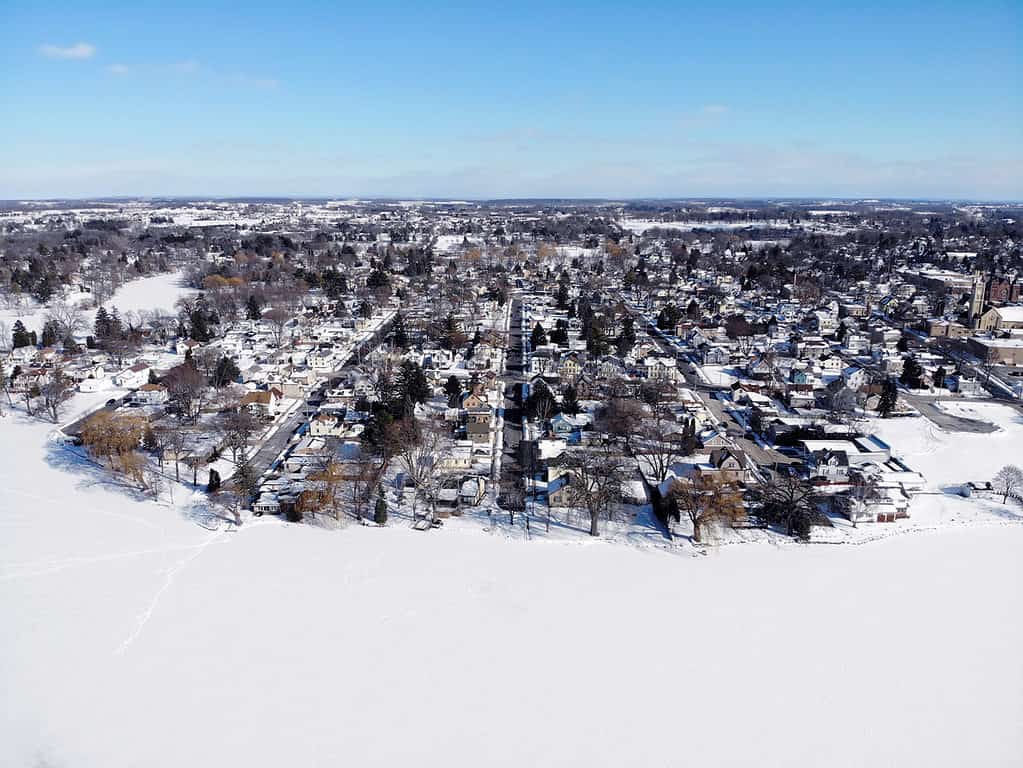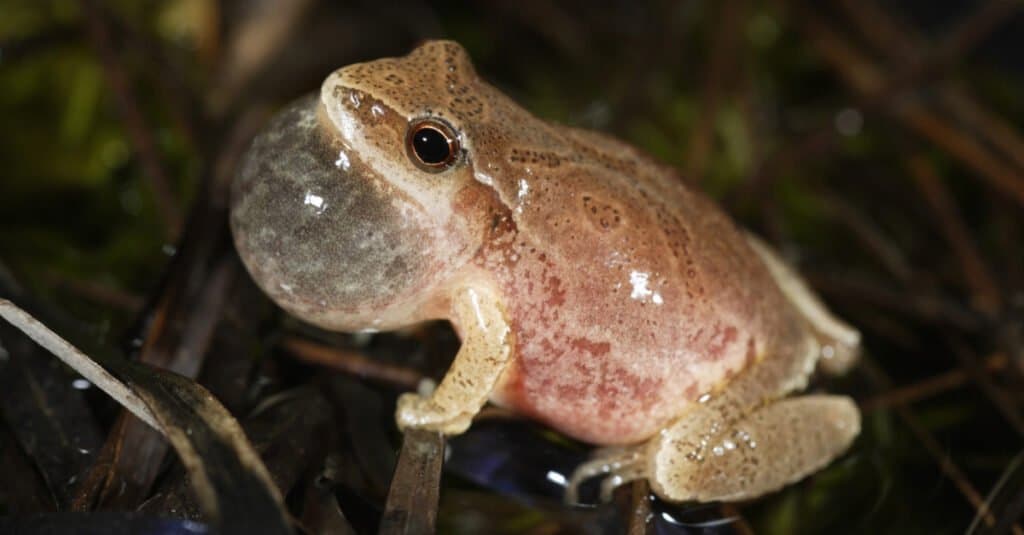Based in the Midwest, Wisconsin experiences exceptionally harsh and unforgiving winters, often accompanied by unrelenting snow and rain. Unfortunately, Wisconsin winters are also unpredictable. It’s not uncommon for the weather to turn quickly from balmy to freezing overnight or for snow to fall halfway through spring.
As the 7th coldest state in America, Wisconsinites are accustomed to the cold and know how to prepare for the hard, icy months between December and February and beyond. Familiar with crisp winters, they might be, but what has been the lowest temperature ever recorded in the books that people still talk about today?
Read on to learn about the coldest day in Wisconsin’s history, where it took place, and the health risks associated with plummeting temperatures. Plus, which Wisconsin animals are best adapted to its wintery conditions? Their methods of survival will fascinate you!
The Coldest Day Ever Recorded in Wisconsin

The coldest day ever recorded in Wisconsin was on February 4, 1996, when Couderay recorded a temperature of -55 degrees Fahrenheit.
©iStock.com/quinntheislander
Winter is a bracing time in Wisconsin, with the average temperature reaching just 16.3 degrees Fahrenheit. People are warned about the increased health risks of hypothermia and frostbite and advised to dress warmly and limit their time outside when it’s this cold.
Though these low temperatures are unpleasant, they pale in comparison to Wisconsin’s coldest day.
On February 4, 1996, the temperature in Couderay reached an all-time low. The temperature fell overnight to a frigid -55 degrees Fahrenheit.
Wisconsin experienced shocking weather in the days leading to this massive temperature drop. An arctic blast blew across the state, with areas like Green Bay encountering temperatures below zero for five consecutive days.
The Climate of Wisconsin in the Winter
Those who don’t like the cold won’t acclimatize well to Wisconsin’s cold, snowy winters. Some parts of Wisconsin are slightly warmer, with the state’s southern regions experiencing less snow than in the north.
Northern Wisconsin, particularly the areas around the Great Lakes, is characteristically covered in white as the lakes have their own micro-climate, which causes extensive snowfall.
The snow between the south and north ranges from 40 inches in the south to 110 inches in the north. The most snowfall to hit Wisconsin occurred in Neillsville in 1904, when 26 inches fell in a single day.
Animals That Adapt Well to Wisconsin Winters
While Wisconsin natives might survive the cold by bundling up, staying indoors, and blasting central heating, some species of animals inhabiting Wisconsin adapt in unique ways to the cold.
1. White-Tailed Deer

White-tailed deer develop thick winter undercoats to keep them warm during winter.
©iStock.com/Matt Dirksen
Although the white-tailed deer might not look all that robust, the buck survives winter by consuming a high-calorie diet of fruit and nuts in the fall, thus building up the necessary fat reserves to sustain them.
Their bodies have also adapted to the cold. They develop thick winter undercoats to keep them warm and grow long, hollow hairs called guard cells that insulate the fur and trap warmth from the sun. In addition, white-tailed deer secrete oil that makes their fur repel water.
They’ll also decrease their activity to conserve energy and take shelter under coniferous trees with other deer.
2. American Badgers

American badgers enter a state of hibernation during winter.
©Jonathunder, CC BY-SA 3.0, via Wikimedia Commons – License
Some animals, like the American badger, withstand the coldest winters by sleeping through them. This carnivorous hunter is an expert digger. It will prepare for winter by building an extensive network of caves called setts where it will spend the winter.
Before hibernating, the American badger must put on weight, which it’ll do by caching. Caching refers to catching and stockpiling food within the burrow to consume later.
Once winter arrives, the badger begins its months-long period of hibernation. It enters a 29-hour torpid sleeping state to slow its metabolism and conserve energy. Once temperatures outside are above zero, the badger will exit its shelter and return to an active state.
3. Frogs

Frogs, like spring peepers, hide under leaves to insulate their bodies at the start of winter.
©Paul Tessier/Shutterstock.com
Certain types of frogs in Wisconsin literally freeze during winter, later thawing when the temperatures warm up. They do this with a self-regulating anti-freeze agent called glycol. This biological process is called a freeze-thaw cycle and is what many amphibians worldwide undergo to weather the winter months.
At the start of winter, frogs, like spring peepers, hide under leaves to insulate their bodies. As it gets colder and their bodies’ temperatures fall to zero, their metabolism speeds up, and they’ll produce the anti-freeze glycol.
Over this period, their hearts will stop, brains shut down, and they’ll appear dead for all intents and purposes, but they’ll survive the winter and virtually return to life, resuming their activities at the start of spring.
4. Splitting Hares
Splitting hares or snowshoe hares have specially adapted feet with long hairs that keep them hopping throughout winter. Their hair, which changes from gray to white, is used as camouflage against the white, wintery background.
Like their relatives, the cottontail rabbits occupying the southern regions, splitting hares will modify their diet to prepare for the changing seasons and avoid starvation. Pre-winter, their diet of grass and forbs on the ground changes to twigs, buds, and needles of trees. As snowfall levels increase, splitting hares will easily reach their food source and sustain themselves throughout winter.
5. Tree Squirrels
Like badgers, squirrels rely on caching to store food that’ll last them throughout winter.
They utilize an advanced and awe-inspiring technique called scatter hoarding, where they’ll bury a wide variety of acorns and other food spread across an area to protect their stash. Usually, in each hiding place is a different food item.
Knowing that competition for food is high, tree squirrels will also dig fake holes to deceive and confuse other opportunistic rodents.
Being extremely clever and possessing extensive spatial memory, squirrels will remember many of their hiding spots.
6. Moles

To stay alive during the winter, moles hoard and stockpile food.
©Liz Weber/Shutterstock.com
Moles are burrowing rodents that don’t hibernate. To stay alive during winter, they also hoard and stockpile food. Unlike other types of hoarding, their methods are unconventional and gruesome.
Out of winter, moles eat their body weight in earthworms – it’s their diet staple. Because earthworms are harder to find when the soil gets cooler, moles collect and trap live earthworms – essentially imprisoning their food before eating them.
7. Ruffed Grouse
Many birds will migrate to warmer climates, but some, like the ruffed grouse, don’t only cope but thrive in winter.
The ruffed grouse has specialized features made for the cold. Their toes grow pectinations, comb-like projections that help the bird walk on snow, their nostrils grow feathers that warm up cold air, and their legs also become fur-covered to protect against the cold and snow.
Additionally, instead of taking refuge in trees, the ruffed grouse is known to dive-bomb and tunnel through deep snow, creating a self-styled igloo from where they’ll stay cooped up for a few days, using the snow as insulation.
Up Next:
- The Coldest Temperature Ever Recorded in Vermont
- Discover The Coldest Place in Wisconsin
- Discover Wisconsin’s Coldest January On Record
The photo featured at the top of this post is © iStock.com/alexkich
Thank you for reading! Have some feedback for us? Contact the AZ Animals editorial team.







